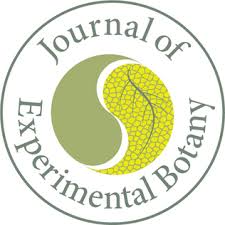Ver ítem
- xmlui.general.dspace_homeCentros Regionales y EEAsCentro Regional Buenos Aires NorteEEA San PedroArtículos científicosxmlui.ArtifactBrowser.ItemViewer.trail
- Inicio
- Centros Regionales y EEAs
- Centro Regional Buenos Aires Norte
- EEA San Pedro
- Artículos científicos
- Ver ítem
Biochemical and proteomic analysis of ‘Dixiland’ peach fruit (Prunus persica) upon heat treatment
Resumen
Shipping of peaches to distant markets and storage require low temperature; however, cold storage affects fruit quality causing physiological disorders collectively termed ‘chilling injury’ (CI). In order to ameliorate CI, different strategies have been applied before cold storage; among them heat treatment (HT) has been widely used. In this work, the effect of HT on peach fruit quality as well as on carbon metabolism was evaluated. When fruit were
[ver mas...]
Shipping of peaches to distant markets and storage require low temperature; however, cold storage affects fruit quality causing physiological disorders collectively termed ‘chilling injury’ (CI). In order to ameliorate CI, different strategies have been applied before cold storage; among them heat treatment (HT) has been widely used. In this work, the effect of HT on peach fruit quality as well as on carbon metabolism was evaluated. When fruit were exposed to 39 °C for 3 d, ripening was delayed, with softening inhibition and slowing down of ethylene production. Several differences were observed between fruit ripening at ambient temperature versus fruit that had been heat treated. However, the major effects of HT on carbon metabolism and organoleptic characteristics were reversible, since normal fruit ripening was restored after transferring heated peaches to ambient temperature. Positive quality features such as an increment in the fructose content, largely responsible for the sweetness, and reddish coloration were observed. Nevertheless, high amounts of acetaldehyde and low organic acid content were also detected. The differential proteome of heated fruit was characterized, revealing that heat-induced CI tolerance may be acquired by the activation of different molecular mechanisms. Induction of related stress proteins in the heat-exposed fruits such as heat shock proteins, cysteine proteases, and dehydrin, and repression of a polyphenol oxidase provide molecular evidence of candidate proteins that may prevent some of the CI symptoms. This study contributes to a deeper understanding of the cellular events in peach under HT in view of a possible technological use aimed to improve organoleptic and shelf-life features.
[Cerrar]

Autor
Lara, María Valeria;
Borsani, Julia;
Budde, Claudio Olaf;
Lauxmann, Martín Alexander;
Lombardo, Verónica Andrea;
Murray, Ricardo Ernesto;
Andreo, Carlos Santiago;
Drincovich, María Fabiana;
Fuente
Journal of Experimental Botany 60 (15) : 4315–4333 (nov. 2009)
Fecha
2009
Editorial
Oxford Academic Press
ISSN
1460-2431e
0022-0957
0022-0957
Formato
pdf
Tipo de documento
artículo
Palabras Claves
Derechos de acceso
Abierto
 Excepto donde se diga explicitamente, este item se publica bajo la siguiente descripción: Creative Commons Attribution-NonCommercial-ShareAlike 2.5 Unported (CC BY-NC-SA 2.5)
Excepto donde se diga explicitamente, este item se publica bajo la siguiente descripción: Creative Commons Attribution-NonCommercial-ShareAlike 2.5 Unported (CC BY-NC-SA 2.5)


